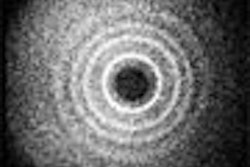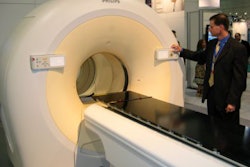Chronic osteomyelitis, a severe and painful infection resulting from bone tissue death due to lost blood supply, can persist intermittently for years. CT, x-ray, and MRI have all shown some efficacy in diagnosing chronic osteomyelitis; however, these modalities are limited because they cannot gauge the extent of active infection.
FDG-PET has demonstrated great strength in oncology imaging, and is beginning to flex its muscles in infection and inflammation imaging. A team of researchers from the Hospital of the University of Pennsylvania and Children's Hospital of Philadelphia recently utilized the technology for diagnosing chronic osteomyelitis, and detailed their findings at the 2006 Society of Nuclear Medicine (SNM) conference in San Diego.
"FDG-PET is a highly effective imaging method for determining the presence or absence of chronic osteomyelitis," said Dr. Wichana Chamroonrat, who presented the group's retrospective study results. "Accurate diagnosis or exclusion of chronic osteomyelitis will substantially decrease the time required for starting appropriate treatments for these patients."
The researchers examined 57 patients with suspected osteomyelitis who underwent FDG-PET scans on a dedicated full-ring scanner (Allegro, Philips Medical Systems, Andover, MA) 60 minutes postinjection of FDG. PET images were then compared with the final diagnosis, which was made on the basis of surgery, microbiology, and patient clinical follow-up six months after the PET studies had been performed.
"FDG-PET images allowed physicians to correctly diagnose the presence or absence of osteomyelitis in 53 of 57 patients," Chamroonrat said.
A total of 27 patients were determined to have chronic osteomyelitis and 30 of the patient cohort proved to be free of bone infection. Of this group, FDG-PET correctly identified 26 of 27 patients with chronic osteomyelitis but proved to be false-positive in three patients, she noted.
Overall, the study had a sensitivity rate of 96.3%, specificity rate of 90%, and accuracy rate of 93% in evaluating osteomyelitis, according to the researchers. The positive and negative predictive values for FDG-PET in the diagnosis of chronic osteomyelitis were 90% and 96.4%, respectively.
Chamroonrat observed that FDG-PET is used relatively infrequently for detecting infection compared to its widespread applications in cancer management.
"Our data show that the role of FDG-PET imaging in detecting and characterizing infection and inflammation is quite clear at this time," she said. "However, research in our own laboratory as well as in other centers around the world should refine the criteria for optimal utilization of this modality in settings such as diabetic foot, infected prosthesis, and other complicated clinical scenarios."
Based on the findings, Chamroonrat recommended FDG-PET as a first-line modality for imaging suspected chronic osteomyelitis.
"FDG-PET is a highly effective imaging method for determining the presence or absence of chronic osteomyelitis, and should be employed as the study of choice in this setting," she said.
The team's observations on the usefulness of PET imaging for bone infection are echoed by Italian researchers, whose results are available online prior to publication (Nuclear Medicine Communications, August 2006, Vol. 27:8, pp. 645-660).
"Radiographs and bone cultures are mainstays for the diagnosis of bone infections but are often useless in the lengthy management of these patients," they wrote. "FDG-PET, where available, has a significant impact in the study of infections using radionuclides: high-resolution tomographic images represent an effective alternative to gallium in the assessment of inflammation of spine lesions but a comparison with morphological examinations (CT or MRI) is essential."
By Jonathan S. Batchelor
AuntMinnie.com staff writer
July 21, 2006
Related Reading
PET update on skeletal applications highlights infection, osseous metastases, October 7, 2003
Infecton SPECT, FDG-PET illuminate skeletal infections, June 20, 2002
FDG-PET detects sites of bone, soft tissue infections, July 2, 2001
Researchers compare PET to scintigraphy for detecting orthopedic infection, June 19, 2000
FDG-PET seeks to make connection between prosthetic joints and infection, June 5, 2000
Copyright © 2006 AuntMinnie.com



















